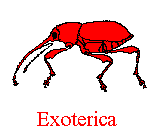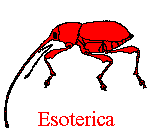In the course of a long discussion of rhetoric addressed to Tacitus, Pliny argues that size matters in judging orations, with an extended analogy from living creatures (Epistulae 1.20.4-5):(1)
Et hercule ut aliae bonae res ita bonus liber melior est quisque quo maior. 5 Vides ut statuas signa picturas, hominum denique multorumque animalium formas, arborum etiam, si modo sint decorae, nihil magis quam amplitudo commendet. Idem orationibus evenit; quin etiam voluminibus ipsis auctoritatem quandam et pulchritudinem adicit magnitudo.
1 melior est β : meliorem γ | 2 multorumque β : pictorum multorum γ | 3 amplitudo β : magnitudo γ
In his BMCR review of Zehnacker’s new Budé edition of Books I-III, G. Liberman impugns multorumque:(2)
Multorum semble être une faute par anticipation due à multorum plus bas (7); on attend ici aliorum ou ceterorum.
I am not convinced, partly because multorum in § 7 is nine lines further down the page in Mynors’ text, which is a long way to anticipate, partly because neither aliorum nor ceterorum has much palaeographical resemblance to multorum, but mostly because I think I have a better solution.
My conjecture seems so obvious that I almost hesitate to bring it forward – hence my title. It seems to me that the adjective we want is mutorum. The collocation muta animalia is almost formulaic in early Imperial Latin: I find it (in various cases, but always plural) in Manilius (2.99), Petronius (140.15), the younger Seneca (Cons.Marc. 7.2, De Ira 1.3.6, E.M. 123.16), and Tacitus (H. 4.17.5), to look no further. In these passages, the adjective is mostly used to distinguish other animals from humans: not ‘silent’ but ‘inarticulate, lacking speech’. That makes mutorum in our passage functionally equivalent to aliorum and ceterorum, but arguably more vivid, and certainly closer to the ductus litterarum. Mutus is not a rare adjective, but multus is commoner, so multorum is still the lectio facilior.
I take it that si modo sint decorae refers to humans and animals as well as trees: the antecedent of the implied subject of the condition is formas, not arborum. It is not just ugly trees that would be uglier magnified, but ugly humans and animals as well. There was no need for Pliny to write multorum to exclude ugly animals that would look even worse on a large scale (toads, moles, lampreys, baboons(3)), because si modo sint decorae already does that. In the first sentence quoted, he had already specified that only a good book is better for being longer.(4)
(1) Text and variants are quoted from Mynors’ Oxford Classical Text (1963).
(2) Hubert Zehnacker (ed.), Pline le Jeune. Lettres: Livres I-III. nouvelle édition. Paris: Les Belles Lettres, 2009. Liberman’s review: BMRC 2009.7.16 (link).
(3) Then again, not everyone agrees that large portraits of ugly animals should not be made: there is a Boll Weevil Monument in Enterprise, Alabama (link).
(4) I owe the pun, and the hyperbaton, in my title to Andrea Harris.


